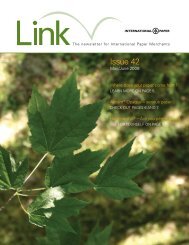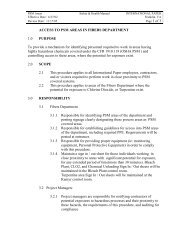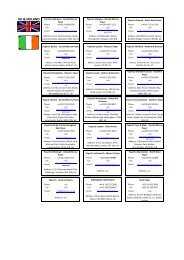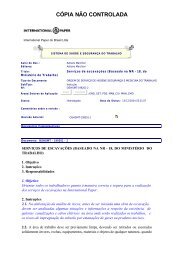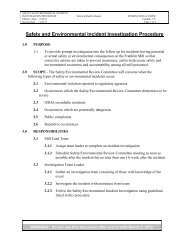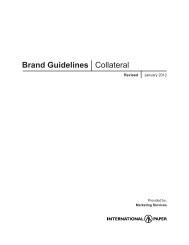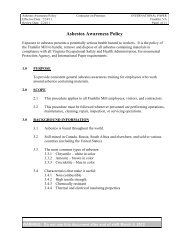Glossary - International Paper
Glossary - International Paper
Glossary - International Paper
Create successful ePaper yourself
Turn your PDF publications into a flip-book with our unique Google optimized e-Paper software.
Porosity - The degree of compactness of the fibers of the paper. It is<br />
an indication of the openness of paper, as measured by resistance to<br />
the passage of air through the sheet.<br />
Post-consumer waste - That fraction of the waste stream which has<br />
passed through the hands of an end-user. Ex. one-time used paper<br />
bags, newspapers, office papers.<br />
Pre-consumer waste - That fraction of the waste stream which is<br />
disposed of during conversion to the end-use product. Ex. envelope<br />
clippings, corrugated box plant die clippings, printing press waste.<br />
Pressboard - Manufactured on a wet machine from sulphate pulp,<br />
cotton fiber or a combination of both and finished with a high polish.<br />
Thickness ranges from .031 to .250 of an inch. Principal qualities:<br />
uniform thickness and density, excellent ply adhesion and good forming<br />
and molting properties. Available in a variety of colors.<br />
Press section- Section of the paper machine just after the Fourdrinier.<br />
It takes the wet formed pulp mat and squeezes it under high pressure<br />
in the nip between two mechanical rolls in order to further remove<br />
water.<br />
Process printing - Printing from two or more halftone plates to<br />
produce various colors and shades.<br />
-R-<br />
Rag paper - Historically, paper made with rag pulp. Today it is usually<br />
referred to as cotton fiber paper. It may be made from cotton cuttings<br />
(rags), linters or other waste cotton. End uses are principally high grade<br />
bond, ledger and writing , and papers required for permanent record<br />
purposes.<br />
Ream - 3000 square feet.<br />
Recovery boiler - Process in the kraft recovery system which burns<br />
spent cooking liquor to regenerate sodium sulphide. Additionally, the<br />
dissolved wood components in the black liquor are burned to generate<br />
steam and electricity for the rest of the mill.<br />
<strong>Glossary</strong><br />
For more information, please<br />
contact:<br />
<strong>International</strong> <strong>Paper</strong><br />
Coated <strong>Paper</strong>board Business<br />
6420 Poplar Avenue<br />
Memphis, TN 38197<br />
Toll Free: (888) 815-4873



